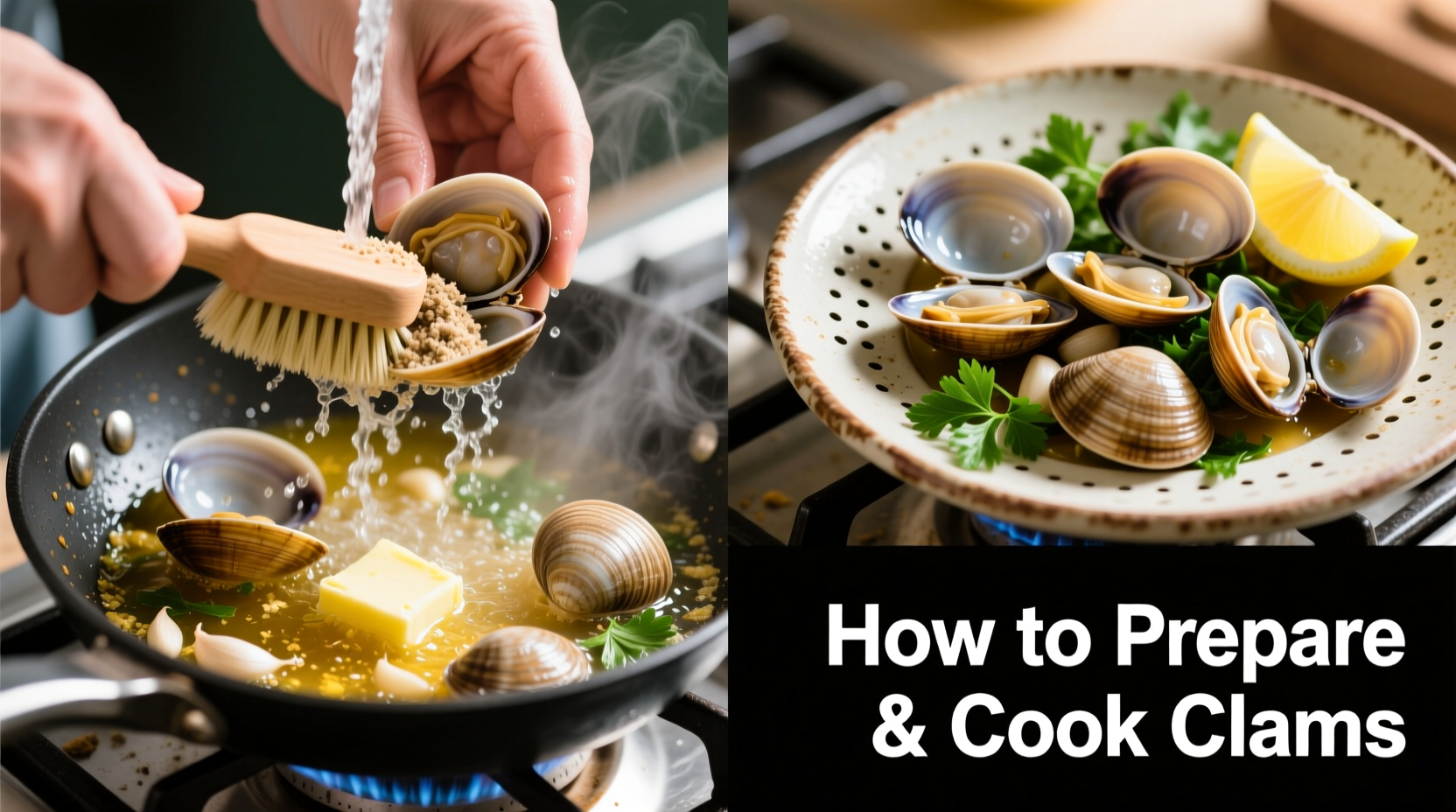Selecting Fresh Clams: Your First Critical Step
Choosing live, fresh clams is non-negotiable for safety and flavor. At the seafood counter, look for clams that are tightly closed or close when tapped. Discard any with cracked shells or those that remain open after tapping—these are dead and unsafe to eat. The FDA recommends purchasing shellfish from approved sources to ensure proper handling and freshness.
Common varieties include:
| Clam Type | Best Cooking Method | Flavor Profile | Seasonality |
|---|---|---|---|
| Manila | Steaming | Sweet, mild | Year-round |
| Littleneck | Grilling, steaming | Briny, delicate | Spring-Fall |
| Cherrystone | Chowders, pasta | Robust, oceanic | Year-round |
| Quahog | Chowders, stuffing | Strong, chewy | Fall-Winter |
According to Seafood Watch, Manila clams from U.S. West Coast farms represent a "Best Choice" for sustainable seafood, while imported varieties may carry environmental concerns.
Purging Sand: Essential Preparation Technique

Even clams labeled "pre-purged" benefit from home preparation. The USDA recommends a 20-30 minute saltwater soak to remove sand:
- Combine 1/4 cup salt per quart of cold water
- Submerge clams completely in the solution
- Add crushed ice to keep water cold
- Let sit 20-30 minutes, replacing water once
- Rub shells with a stiff brush under cold running water
Never use freshwater for purging—this kills clams prematurely. Discard any that float or remain open during cleaning. Properly purged clams should feel heavy for their size with no visible grit when shaken.
Cooking Methods: Timing is Everything
Clams cook rapidly and become tough when overcooked. The moment shells open—usually 5-8 minutes—indicates doneness. Remove immediately from heat as residual cooking continues.
Classic Steamed Clams (4 servings)
- 2 lbs fresh clams
- 3 tbsp olive oil
- 4 garlic cloves, minced
- 1 shallot, finely diced
- 1/2 cup dry white wine
- 1/4 cup chopped parsley
- Lemon wedges for serving
- Heat oil in large pot over medium-high heat
- Saute garlic and shallot until fragrant (1-2 minutes)
- Add wine and bring to simmer
- Add clams, cover immediately
- Steam 5-8 minutes until shells open
- Discard any unopened clams
- Season with parsley and serve immediately
Alternative Cooking Methods
Grilling: Place directly on hot grill (400°F) for 3-5 minutes until shells open. Best for larger varieties like cherrystones.
Sauteing: Remove from shells after initial cooking, then saute 1-2 minutes in butter with garlic. Ideal for pasta dishes.
Baking: Arrange on baking sheet with sauce, 425°F for 8-10 minutes. Works well for stuffed preparations.
Safety Timeline: From Purchase to Plate
Seafood safety requires strict timing. Follow this critical timeline to prevent foodborne illness:
- Purchase to refrigeration: Less than 1 hour (2 hours if ambient temperature below 90°F)
- Refrigerated storage: Maximum 2 days at 32-34°F in mesh bag over bowl of ice
- Purging process: 20-30 minutes total (longer causes stress and death)
- Cooking time: 5-8 minutes from heat application to shell opening
- Leftovers: Consume within 2 days; discard if any off odors develop
The FDA Food Code specifies that cooked shellfish must reach an internal temperature of 145°F or until shells open. Never consume clams that fail to open during cooking—this indicates they were dead before cooking and may contain harmful bacteria.
When Not to Eat Clams: Critical Safety Boundaries
Understanding context boundaries prevents food poisoning. Avoid consuming clams when:
- Shells remain open after tapping (indicates dead shellfish)
- They smell sour, fishy, or ammonia-like (fresh clams smell like ocean breeze)
- They've been stored more than 48 hours refrigerated
- They're harvested from red tide or algal bloom areas
- They're collected during warmer months in regions with Vibrio risk
Vibrio vulnificus bacteria, naturally present in warm coastal waters, can cause serious illness. The CDC reports nearly 200 Vibrio infections annually from contaminated shellfish, with higher risk during summer months. Individuals with liver disease, diabetes, or compromised immune systems face elevated risks.
Perfect Pairings and Presentation
Serve steamed clams immediately in wide bowls with broth for dipping. Essential accompaniments include:
- Crusty bread for soaking up flavorful broth
- Lemon wedges to brighten briny flavors
- Chilled white wine (Sauvignon Blanc or Pinot Grigio)
- Simple green salad to balance richness
For restaurant-quality presentation, arrange opened clams in their half-shells over a bed of rock salt to keep them stable. Garnish with fresh parsley and lemon slices. The ideal clam-to-broth ratio is approximately 60% clams to 40% broth for optimal flavor balance.
Troubleshooting Common Clam Problems
Sandy clams: Insufficient purging. Next time, extend saltwater soak to 30 minutes with two water changes.
Tough texture: Overcooking. Reduce heat time by 1-2 minutes and remove immediately when shells open.
Bitter flavor: Dead clams in the batch. Always check for live specimens before cooking.
Dry meat: Using larger, tougher varieties for steaming. Choose manila or littleneck for delicate preparations.
FAQ: Frequently Asked Questions
How can I tell if clams are fresh when buying?
Fresh clams should be tightly closed or close when tapped. They should smell like clean ocean water, not fishy or sour. Discard any with cracked shells or that remain open after tapping, as these are dead and unsafe to eat. Live clams feel heavy for their size with no visible grit when shaken.
What's the best way to store clams before cooking?
Store clams in the refrigerator at 32-34°F in a mesh bag or open container covered with a damp cloth. Place them in a bowl over ice (never submerged in water) to maintain proper humidity. Consume within 48 hours for optimal freshness and safety. Never store clams in airtight containers or freshwater, as this will kill them prematurely.
Why do some clams not open after cooking?
Clams that don't open during cooking were likely dead before preparation. Dead clams don't build the internal pressure needed to open their shells when heated. These should be discarded immediately as they may contain harmful bacteria. Always discard unopened clams after cooking—never force them open.
Can I freeze fresh clams for later use?
Yes, but with proper technique. Freeze live clams in their shells for up to 3 months. Place them in airtight freezer bags with as much air removed as possible. Thaw overnight in the refrigerator before use—never thaw at room temperature. Note that freezing kills the clams, so they won't open during cooking. Alternatively, shuck and freeze the meat in its liquid for up to 4 months.











 浙公网安备
33010002000092号
浙公网安备
33010002000092号 浙B2-20120091-4
浙B2-20120091-4